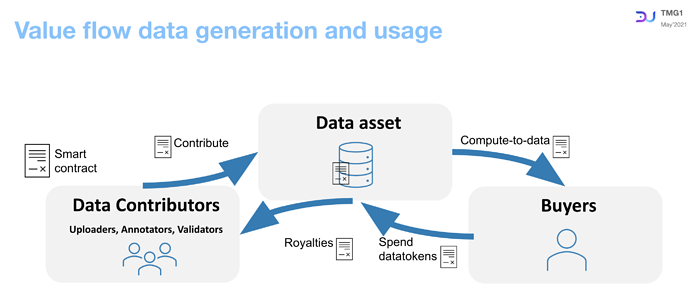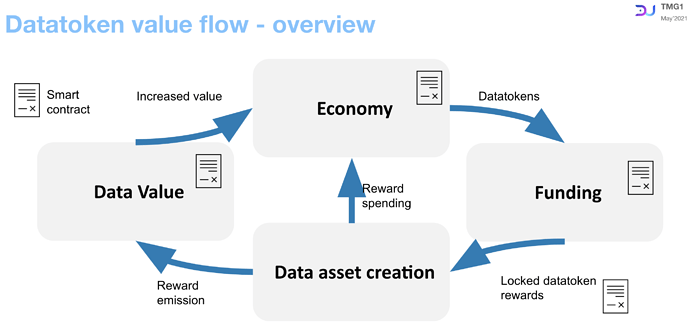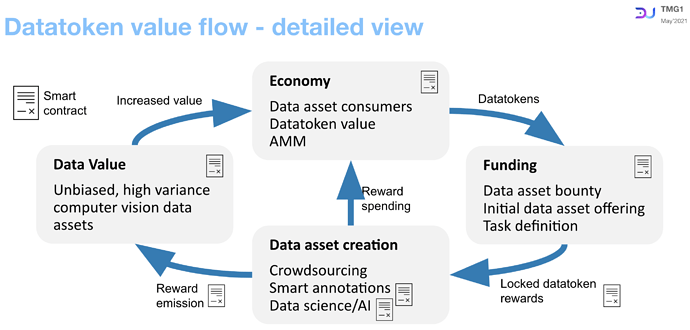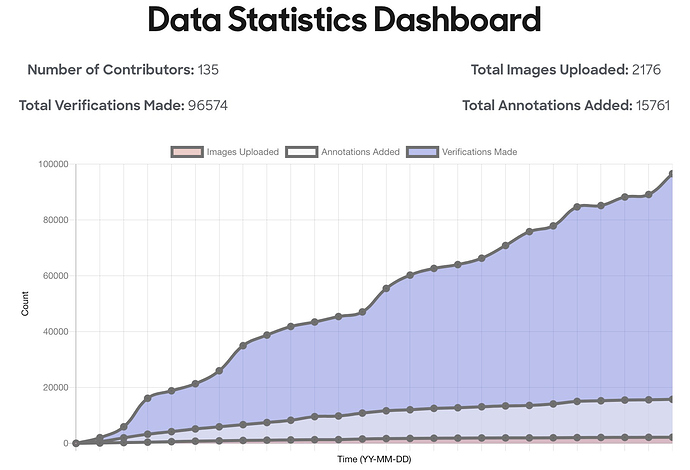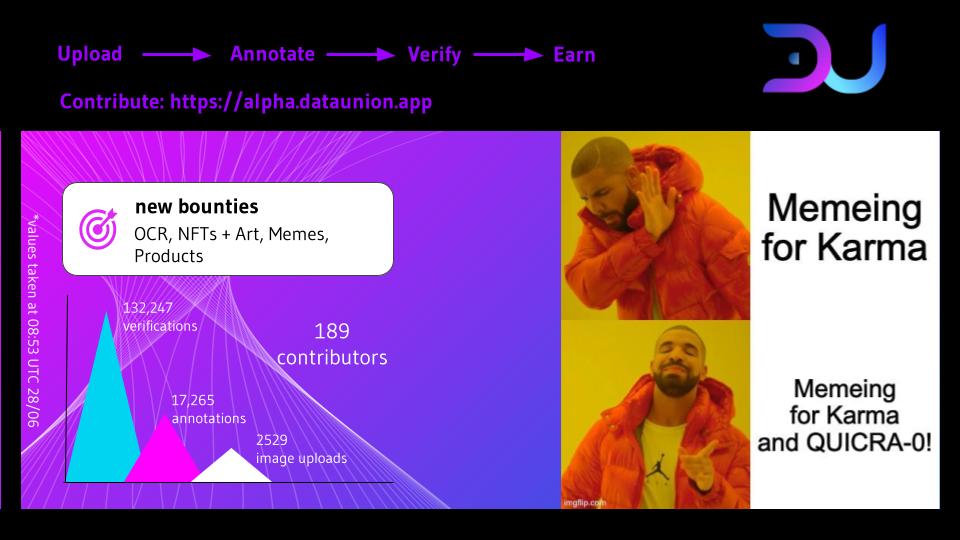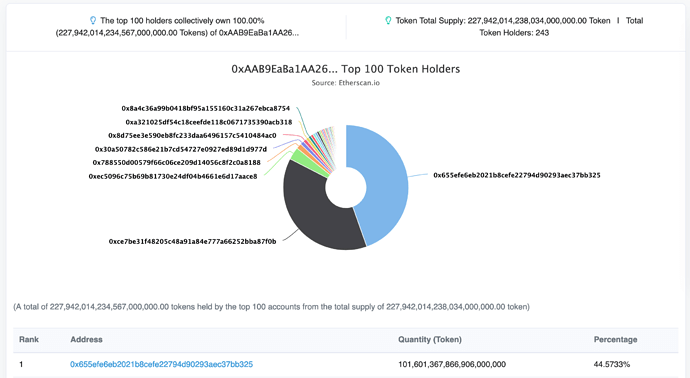Key Project Data
-
Name of project: DataUnion
-
Team Website (if applicable): https://dataunion.app
-
Proposal Wallet Address (*mandatory): 0x655eFe6Eb2021b8CEfE22794d90293aeC37bb325
-
Current country of residence (*mandatory) Germany
-
Contact Email (*mandatory) info@dataunion.app
-
Twitter Handle: @DataUnionA
-
Discord Handle: Robin (alpha.DataUnion.app)#5649
-
The proposal in one sentence: The company creates a two-sided market and economy for crowdsourced data to enable long and short term benefits of AI for market and economy participants.
-
Which category best describes your project? Pick one or more.
-
[x] Build / improve applications or integrations to Ocean
-
[x] Unleash data
-
Funding Amount: 32.000 $OCEAN
-
Current Remaining Grant Treasury Balance: 0
-
Have you previously received an OceanDAO Grant?: Yes
Project Overview
Description of the project:
This proposal is for continued funding of DataUnion’s development.
Here is an update for OceanDAO round 7 to explain our current status (links to YouTube):
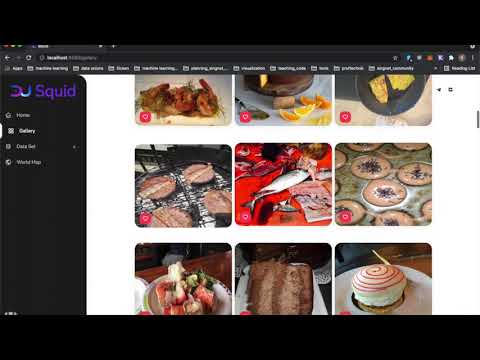
The funds of the proposal are used to reward our engineering team for their work.
What problem is your project solving?
This is the final app humanity needs - it gives us the ability to contribute to AI and robotics and enable humanity to profit from the data this technology needs. We want to give everyone the ability to use their data for a better future and their own profit.
This project is about creating an image dataset that is created and owned by the people that contribute to it. These contributions include uploading the data, annotating it as well as verifying that the data and the annotations are correct. By doing this the contributors are motivated to contribute highest quality content as they will be rewarded with shares of the dataset they contributed to. We are baking this slowly and release the features separately to have the maximal amount of feedback from our community.
So this covers the creation part of the project. But to refinance this process we have to find customers. The customers can create Data Bounties to increase the incentives for the creation of specific machine learning ready images. Customers can also bring their own datasets and ask only for annotation and/or verification by the contributors.
In the most important option for customers they can train algorithms on parts of the data via Ocean Protocol’s compute-to-data technology. In this way they can train object recognition algorithms without the risk of the data to leak thus the project remains in full ownership of the data. This is done via a marketplace on top of Ocean that we create and contains previews and evaluation of parts of the data (via a search engine on tags and annotations) as well as algorithms. The sale of these assets will be done via the liquidity pool of the whole dataset.
So the contributors not just benefit from their contributions but also from the usage of their contributions. This creates long term incentives to maintain control over the created tokens. This project is a showcase of ownership economy based on the economy creation capabilities of Ocean Protocol.
As a next step on our journey we are now starting to incubate new data unions using our technology and concepts as well as simulation models. There are already VisionTherapy and SenseNation in the Ocean ecosystem that are using our advice and expertise to create their own data unions. Here we are also taking the approach to work bottom up with them and help them where they need us.
What is the final product (e.g. App, URL, Medium, etc)?
Our alpha is already online, please go ahead and check it out.
How does this project drive value to the Ocean ecosystem?
Let’s do a ROI calculation - this round we are focusing on facts rather than speculation:
Currently there are 610,553 $OCEAN locked (TVL) in the DataUnion.app liquidity pool on the Ocean marketplace. Additionally we also have an active Twitter account, a Discord and a Telegram community to bring in additional users into the Ocean ecosystem. And we have 203 users contributing on our alpha website. The unleashing of data is happening continuously, check it out in our dashboard.
bang = 610,553 $OCEAN TVL
buck = 119350 $OCEAN - this is explained in more detail in the financial section of the proposal, we assume 32.000 $OCEAN for this proposal here
(% chance of success) = 100% as we are talking about the current situation
ROI = 610553 $OCEAN / 119350 $OCEAN * 1.0 = 5.11 which shows that the ROI of the project after this grant is above the demanded ROI of 1.0
Project Deliverables - Category
-
Parts of the software are open-source with a permissive license at: github.com/DataUnion-app
-
Webapp is available at https://alpha.dataunion.app
-
Data will be made available on Ocean Market via our current dataset via a data sales portal
-
Mobile app will be live in the iOS and Google App Stores. There might be delays due to the app store checks.
Data asset statistics:
End of round 6:
Start of round 7 - we got a beautiful template now as well, thanks @blockchainlugano :
Project Deliverables - Roadmap
Any prior work completed thus far?
Here is a special update for OceanDAO round 7 to explain our current status (links to YouTube):
A lot of the work done in the project so far was recruitment of the team, organisational work, looking for funding and organising the work. We also published our alpha now and have made significant progress with our mobile application. The team now has 15 team members with different strengths to move the project forward. The work is organised via Trello and we have a communication infrastructure via Discord. We also have a social media presence and a website.
What is the project roadmap? That is: what are key milestones, and the target date for each milestone.
- New annotation tools and mechanisms (ongoing)
- Onboard new data unions to our tech and concepts (ongoing)
- Release a mobile application that has the mechanisms of our web app and Swipe-AI (Q3 2021)
- Release the Data Portal (Q3 2021)
- Internationalize the mobile app (Q3 2021)
- Simulate the token value flow using simulation tools (Q3 2021)
- Include NLP to translate annotations and cater to a worldwide audience (Q4 2021)
- Increase decentralisation of our solution by moving the control to smart contracts (Q4 2021)
- Algorithm training and sales via our Data Portal - have the data providers become co-owners of that as well (Q4 2021)
- Allow addition of data while it resides on different storage (2022)
- Recruit more people and facilitate development via OceanDAO grants (ongoing)
- Potentially launch a governance token (Q4 2021)
Please include the milestone: publish an article/tutorial explaining your project as part of the grant (eg medium, etc).
Our alpha website includes tutorial videos explaining the project.
Any maintenance?
These prototypes are the beginning of the journey for the project. There will be a lot more steps after that but we want to first validate our idea via the crypto enthusiasts of the Ocean community (via the web based version) and after that for other target audiences in Nigeria, South Amercia, India and Thailand (via the mobile version).
For us it is important to proceed in an agile manner and to proceed from working prototype to next working prototype to get validation and feedback from our community.
Foreseen or possible additions?
Big additions in the future will be an independent rating system for the quality of the data via state of the art machine learning algorithms. Another validation system for the quality will be algorithm creation competitions a la Kaggle where the winning algorithms will become part of our marketplace.
The contributors that worked on the data as well as the liquidity provider of our pool will get a share in these algorithms’ liquidity pools to benefit from the results of their hard work.
These algorithms will also enable pre labeling of freshly uploaded data to reduce annotation times (basically annotation becomes quality control) and the sale of pretrained models for transfer learning.
After this is setup and working we will move to the next data type - either text or audio data.
Are there any mockups or designs to date?
Check our alpha
An overview of the technology stack?
Frontend: React.JS (web), React Native (mobile)
Backend: Flask + Python libraries, CouchDB (+ PouchDB)
If the project includes community engagement:
Running the campaign on social media for how many weeks?
We will actively promote each phase with datatoken incentives for participants.
For the webapp we will focus on the Ocean community.
Other?
At the moment we are including more and more community members in the creation of content and the project itself. We work with an agile work model where tasks are distributed to team members and these are then rewarded. This opens our team up to a large number of participants.
Team members
The team members are listed on our webpage in the order of them joining the project.
Here is an introduction video by our engineering team - “Hey, OceanDAO  ” (links to YouTube):
” (links to YouTube):
Additional Information
Market situation?
Currently there are no end-to-end solutions for the capturing, annotation and machine learning training available on the market. Especially not on this scale and with the involvement of a worldwide workforce.
Any grants or fundraising to date?
We got 74.915 $OCEAN in the funding rounds so far. 7435 $OCEAN from the Ocean Shipyard program and won 5000 $OCEAN in the Ocean Datatoken hackathon.
Other costs are bootstrapped by Robin, approximately 180.000 $OCEAN as a personal investment into the project. Most of this sits in the datatoken pool but we also invested a good amount to buy 100 QUICRA-0 from the pool to reward the contributors in our initial challenges.
Time and tokens spending
At the moment we do not reward anyone in the management team for their hours. Over the course of the project, we have been working on this for 7 month now, around 1300 hours were spent by the management team.
We do reward the engineering team and there have been around 4000 hours spent by the engineers on the product so far. This means that we are very cost efficient with an average hourly rate of ~20 $OCEAN for our engineers.
We started with the whole team being part timers but now we already have six full time engineers working towards our goals. A huge step forward for six month in the project.
Customer acquisition and business model?
Our team member Florian is currently the CTO of DELL Technologies for Unstructured Data and in this position he is very well connected to all the big players in the industry (e.g. Nvidia, Intel, Microsoft, VW, …). We will leverage his connections and skills as well as Robin’s technical sales/stakeholder skills as a product owner to onboard clients in the future. Additionally we also onboarded Mark who will help us with his experience in business development and market analysis.
Social implications of the solution?
If this project succeeds it will change the life of many people in dire situations on our planet. As soon as they get access to a mobile phone and internet they can start making a living. In Venezuela 200$ can feed a family for one month, we expect to be able to reward much, much more than that for a full month of contributions. So it is a global game changer that will enable these contributors to take care of their families right now but also retain datatokens for the future to create a passive income for retirement. Something that was not available to them ever before.
We connected to potential users in Caracas, Venezuela in May 2021 to get a first impression of their needs, limitations and willingness to help. The feedback is going to shape the project to fit to their needs.
